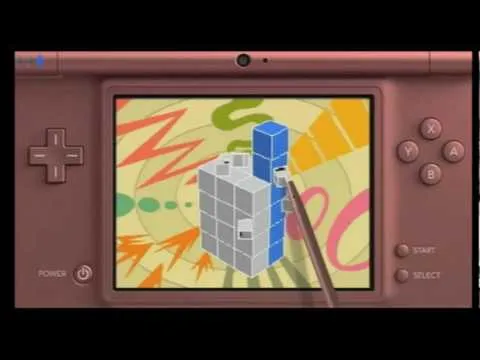

This is another game I discovered thanks to having a Nintendo DS flashcart many years ago: I hadn't played anything related to Picross before this but the idea instantly caught my attention when I played it. It happened to be a perfect fit of a puzzle game to play in a portable...and a quite unique one for that matter.
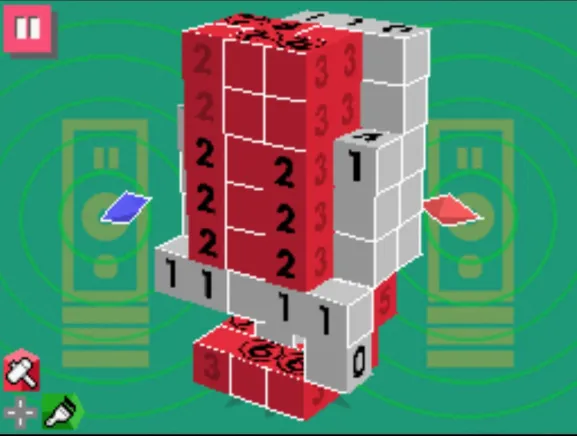
By the Wikipedia definition (which is also the source for the example picture), Picross is known as:
Picture logic puzzles in which cells in a grid must be colored or left blank according to numbers at the side of the grid to reveal a hidden pixel art-like picture. In this puzzle type, the numbers are a form of discrete tomography that measures how many unbroken lines of filled-in squares there are in any given row or column. For example, a clue of "4 8 3" would mean there are sets of four, eight, and three filled squares, in that order, with at least one blank square between successive sets.
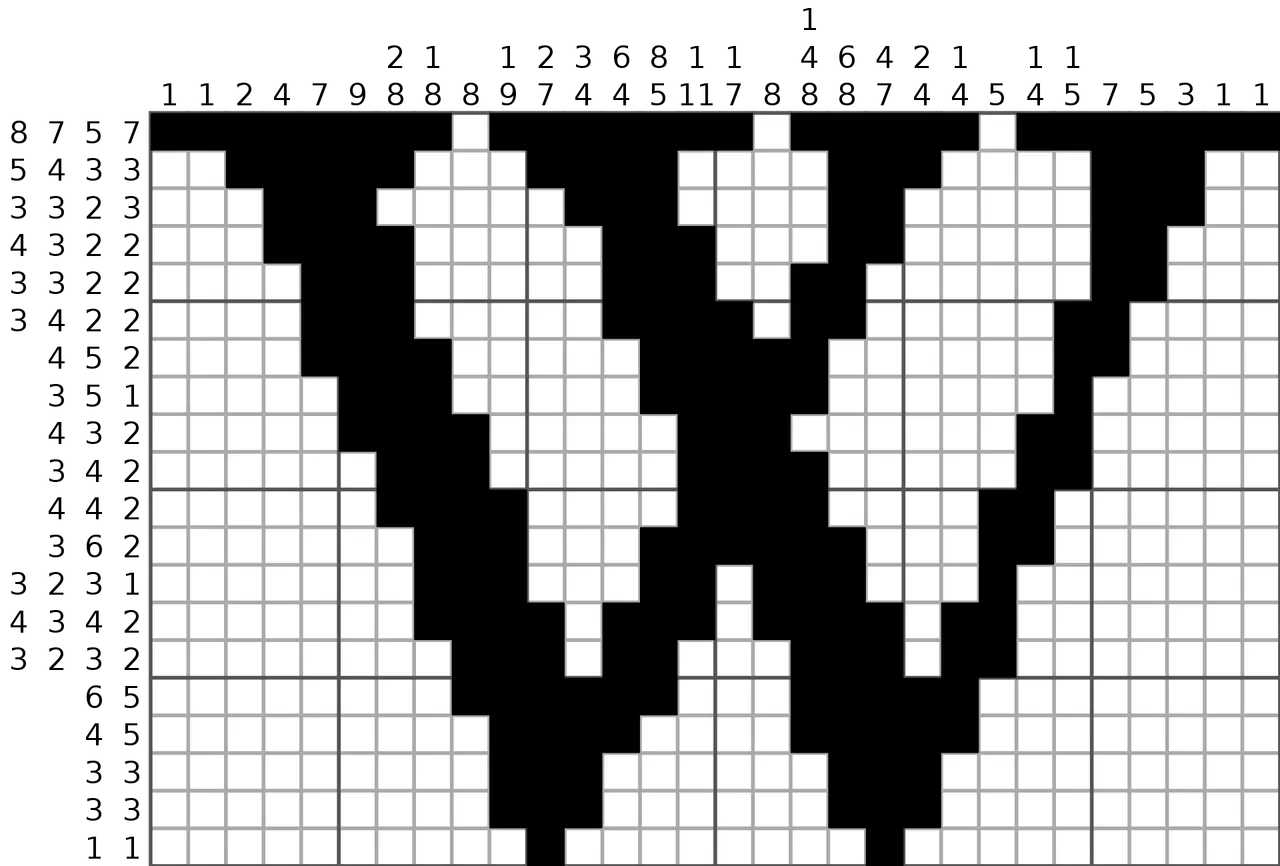
But I actually didn't know this existed before I stumbled with Picross 3D, and in my opinion this game actually makes this concept more intuitive (and fun) than what it sounds like.
The way I would describe it without having to refer to playing Picross 3D is like a 3D Minesweeper, only that you always uncover a shape in every level. It makes me think as if I were sculpting a statue with the block breaking sound and how you slowly but surely get to the solution.
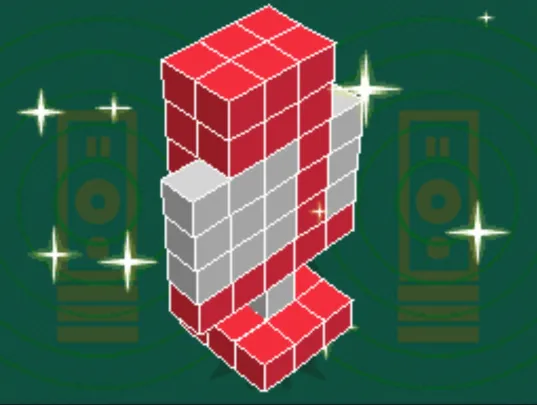
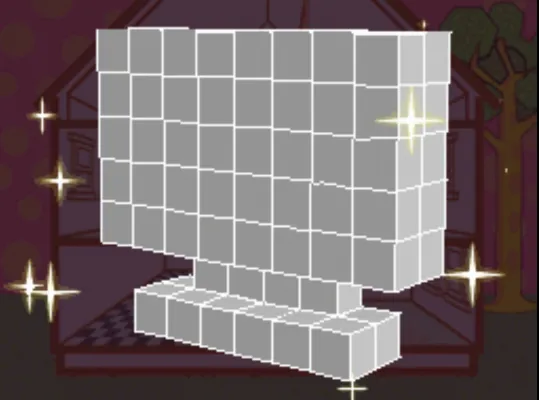

The numbers clue you at how many blocks there are in the row of blocks the number's facing, so for example if there's a block with a side that marks "0", you can safely remove that row of blocks, but if there's any other number, you must try to check other block sides and numbers to figure out which blocks are safe to delete or not...and maybe with some trial and error, but you only get 4 wrong block deletions before a Game Over. You can also paint over blocks to avoid deleting these by accident, which is useful when you are very sure these are needed, and there's two axis pieces that you can move to look under certain block layers.

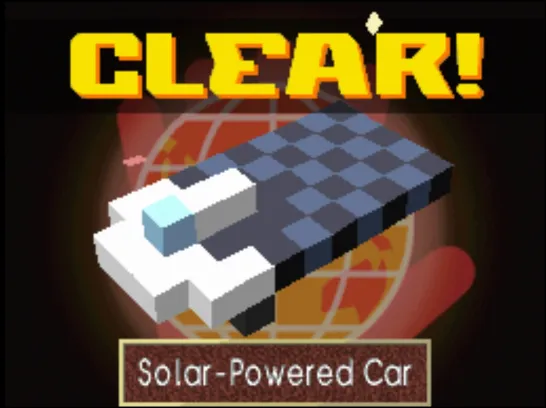
And of course, with every stage clear, you'll make your little mascot cube thing or whatever hop i joy! (doubly so if you get a Perfect score, which is by finishing under par time and not missing once).

That said, it is more forgiving in some way than Minesweeper (well, that is before levels get complex; I'm still on the Easy category full of levels and there are like three more categories after that) with a maximum of 4 misses before getting a Game Over, but sometimes you will get thrown a curveball in the form of One Chance Challenges.
Disappointing the Moai is not advised.
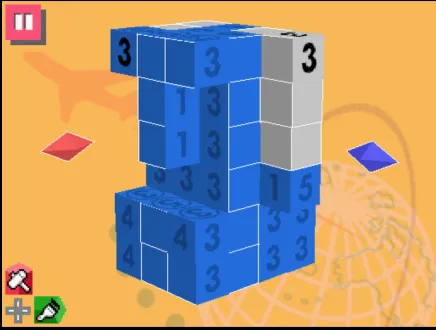
Since this is a Nintendo DS game, using the touch screen to turn around the object and break or flag cubes by holding the D-Pad Up or Right feels pretty comfortable after you get your head around the concept, and the game itself fits well for a portable enviroment with how you can pop open your NDS (or phone emulating the game, in my case) and solve one or more puzzles while waiting on a line or something.
You could even do your own puzzles and share them through the Wi-Fi Connection (before it was defunct), as well as sharing them locally with other players, which is pretty neat!
And for now I'm leaving it here with this trailer, as its probably the one thing that should at least show clearly how this should work in action, which is enough to notice how simple it looks and yet how easily it could get your brain running when more elaborate shapes are thrown at you as you keep playing.
Thank you for reading!

Spanish translation with DeepL. All screenshots were captured by myself.
Español
Este es otro juego que descubrí gracias a tener una Nintendo DS flashcart hace muchos años: No había jugado a nada relacionado con Picross antes de este, pero la idea me llamó la atención al instante cuando lo jugué. Resulta que era un juego de puzles perfecto para jugar en una portátil... y bastante único por cierto.

Según la definición de Wikipedia (que también es la fuente de la imagen de ejemplo), Picross es conocido como:
Rompecabezas de lógica de imágenes en el que las celdas de una cuadrícula deben ser coloreadas o dejadas en blanco de acuerdo con los números en el lado de la cuadrícula para revelar una imagen oculta pixel art. En este tipo de rompecabezas, los números son una forma de tomografía discreta que mide cuántas líneas ininterrumpidas de cuadrados rellenos hay en una fila o columna determinada. Por ejemplo, una pista de "4 8 3" significaría que hay conjuntos de cuatro, ocho y tres cuadrados rellenos, en ese orden, con al menos un cuadrado en blanco entre los conjuntos sucesivos.

Pero en realidad no sabía que esto existía antes de tropezarme con Picross 3D, y en mi opinión este juego realmente hace que este concepto sea más intuitivo (y divertido) de lo que parece.
La forma en que lo describiría sin tener que referirme a jugar a Picross 3D es como un Buscaminas 3D, sólo que siempre descubres una forma en cada nivel. Me hace pensar como si estuviera esculpiendo una estatua con el sonido de rotura de bloques y como llegas poco a poco a la solución.



Los números te dan pistas sobre cuántos bloques hay en la fila de bloques a la que da el número, así que, por ejemplo, si hay un bloque con un lado que marca "0", puedes eliminar con seguridad esa fila de bloques, pero si hay cualquier otro número, debes intentar comprobar otros lados y números de bloques para averiguar qué bloques es seguro eliminar o no... y puede que con algo de ensayo y error, pero sólo se consiguen eliminar 4 bloques erróneos antes de un Game Over. También puedes pintar sobre los bloques para evitar borrarlos por accidente, lo que es útil cuando estás muy seguro de que son necesarios, y hay dos piezas de eje que puedes mover para mirar debajo de ciertas capas de bloques.


¡Y por supuesto, con cada etapa despejada, harás que tu pequeña mascota cúbica o lo que sea salte de alegría! (doblemente si consigues una puntuación Perfecta, que es terminando por debajo del tiempo par y no fallando ni una sola vez).

Dicho esto, en cierto modo es más indulgente que el Buscaminas (bueno, eso es antes de que los niveles se vuelvan complejos; yo todavía estoy en la categoría Fácil llena de niveles y hay como tres categorías más después de esa) con un máximo de 4 fallos antes de conseguir un Game Over, pero a veces se te lanzará una bola curva en forma de Desafíos de Una Oportunidad.
No se recomienda decepcionar al Moai.

Al tratarse de un juego de Nintendo DS, usar la pantalla táctil para girar alrededor del objeto y romper o marcar cubos manteniendo el D-Pad arriba o a la derecha resulta bastante cómodo una vez que te haces a la idea, y el juego en sí se adapta bien a un entorno portátil, ya que puedes abrir la NDS (o el teléfono emulando el juego, en mi caso) y resolver uno o varios puzles mientras esperas en una cola o algo así.
Incluso podías hacer tus propios puzzles y compartirlos a través de la conexión Wi-Fi (antes de que desapareciera), así como compartirlos localmente con otros jugadores, ¡lo cual está muy bien!
Y por ahora lo dejo aquí con este trailer, ya que es probablemente lo único que debería al menos mostrar claramente cómo esto debería funcionar en acción, lo cual es suficiente para notar lo simple que parece y sin embargo lo fácil que podría hacer funcionar tu cerebro cuando te lanzan formas más elaboradas a medida que sigues jugando.
¡Gracias por leer!

Traducción al español hecha con DeepL. Todas las fotos capturadas por mí.
